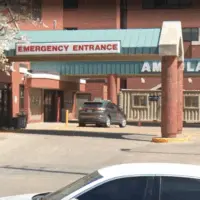
Hospitals across Missouri are preparing for reduced revenue and increased costs under President Donald Trump’s new budget plan, which will slash more than $1 trillion from Medicaid spending over the next decade
By: Meg Cunningham
Missouri’s 67 rural hospitals are pondering a dramatically different future under President Donald Trump’s new budget plan.
The recently approved budget bill will slash federal Medicaid spending by more than $1 trillion over the next decade. By some estimates, it could lead to 8.6 million people nationwide losing health coverage.
Various estimates conclude that between 130,000 and 170,000 Missourians could lose coverage under the state’s Medicaid program, known as MO HealthNet, over the next decade.
And even if you have commercial insurance, the impact on hospital operations and finances could still affect your health care. As people delay treatment for their health conditions due to a lack of insurance, they’ll start relying more on the emergency room as their primary form of health care, experts say.
That will lead to more crowded emergency departments. Moreover, the burden to pay for uninsured patients will shift onto the hospitals that provide the care, and eventually back to patients.
With the budget plan in motion and spending cuts materializing, Missouri’s hospitals are now taking a look at their finances and preparing for an uptick in costs.
For rural Missourians, even those who aren’t on Medicaid, it means the types of health care available to them in the form of obstetric units, primary care providers or specialty providers could be changing.
Or their nearby hospital could be gone altogether.
“We are likely going to see rural hospital closures,” said Sheldon Weisgrau, the vice president of health policy at the Missouri Foundation for Health, in a press briefing.
“We have not had any rural hospitals close since we expanded the Medicaid program,” he said. “We are likely to see rural hospitals close because they operate on the financial edge.”
What do worsening hospital finances under Medicaid cuts mean for you?
Mercy, which is based in the St. Louis area, operates 112 hospitals and emergency rooms across Missouri, Kansas, Oklahoma and Arkansas and has a large footprint in rural Missouri. Mercy estimates that the budget will lead to bigger revenue losses every year.
Five years from now, they estimate, they’ll lose $300 million in revenue annually.
“That’s going to mean we’re going to have to radically look at how we deliver care differently — that is still responsive to our communities,” said Cheryl Matejka, the executive vice president and chief financial officer at Mercy. “It’s going to be different for us to survive and thrive.”
Under the plan, Missouri stands to lose an estimated $23 billion in federal funding over the next decade, according to the Missouri Foundation for Health.* Much of Missouri’s federal money covers the cost of Medicaid for the Affordable Care Act expansion group, which voters approved coverage for with an amendment to the state constitution in 2020.
The new federal budget restricts how states and hospitals can pay for the services they provide by limiting the fees that states can collect from health care providers. It also puts limits on what states can pay hospitals to help them fill gaps in their finances for treating Medicaid patients.
Broken down by year, Missouri’s federal funding for Medicaid will drop about 20% annually as the plan moves forward, Weisgrau said.
“All of this is going to have a disproportionate impact in rural communities,” Weisgrau said.
The Missouri Foundation for Health analyzed the budget plan, he added, and found that rural health care providers could lose 21 cents of every dollar they currently get from Medicaid.
According to KFF, hospitals overall had an operating margin of 5.2% in 2023. For rural hospitals, that margin was 3.1%.
The bulk of the concern stems from an expected rise in uncompensated care — hospitals treating patients even if they cannot pay.
“When folks lose their insurance coverage, it doesn’t mean they don’t continue to get sick,” Weisgrau said. “A lot of them stay out of the health care system because they know they can’t afford it.”
Once their health deteriorates to a certain point, they go to the emergency room, where they are required to be treated, even if they cannot pay for that care.
Mercy, for example, sets aside part of its budget to account for that cost.
“We give away about half a billion dollars of uncompensated or unreimbursed care,” said John Mohart, the executive vice president and chief operation officer for Mercy. “Some of that is for Medicaid patients already, because it doesn’t cover the costs that we have.”
But for smaller hospitals, the flexibility to provide that uncompensated care isn’t there. Fewer insured people will only increase costs.
“If you see an uninsured patient, then you probably have to assume that there is a pretty good chance you’re just going to have to eat those costs,” said Timothy McBride, a public health expert and economist at the Washington University School of Public Health.
As a result, even those covered by commercial insurance could see their premiums rise to help cover the care.
“These costs are passed on to the rest of us,” Weisgrau said. “We will see private insurance premiums going up. Even folks who have good coverage from their employers and think they might be immune from some of these Medicaid cuts will see impacts of this down the line.”
How far will the rural hospital fund go in saving at-risk hospitals?
To help offset some of the costs rural hospitals are taking on, senators in Washington lobbied for the inclusion of a rural hospital stabilization fund. The budget included $50 billion for rural hospitals over the next five years with the possibility of renewing the fund in the future.
Half of it will be distributed by the Centers for Medicare and Medicaid Services, while the other half will flow to states to then send to hospitals.
But the fund won’t be enough to offset the losses rural hospitals are anticipating.
Medicaid spending in rural parts of the country is expected to fall by $137 billion over the next decade — $87 billion more than was allocated to the rural hospital fund, according to KFF.
And even those estimates, KFF said, are modest because they don’t account for how states may change the way they fund Medicaid.
During negotiations surrounding the budget bill, senators asked the University of North Carolina Cecil G. Sheps Center for Health Services Research to analyze how many rural hospitals may be at risk under the plan.
Their report found that nearly 340 rural hospitals were at risk nationwide, based on the rate of Medicaid patients they serve and their consecutive years of financial losses.
In Missouri, four hospitals were considered at-risk, while in Kansas, six hospitals were listed.
One of those hospitals is Bothwell Regional Health Center in Sedalia, the city’s largest employer with more than 1,000 employees.
In 2024, the hospital posted its first profit since 2018, Bothwell CEO Lori Wightman said in a press release in July. Notably, Medicare and Medicaid provided 78% of the payments for its patients.
“These programs pay well below the actual cost of providing care,” Wightman said in the release. “Commercial insurance alone cannot close the gap, and that is where subsidies available to rural hospitals are essential. Unfortunately, the cost of providing care, from personnel to technology, continues to rise making a difficult situation harder to stabilize.”
Other Missouri hospitals included on the list were Scotland County Memorial Hospital in Memphis, Parkland Health Center in Bonne Terre and Lafayette Regional Health Center in Lexington — Sen. Josh Hawley’s hometown.
Studies show that after a rural hospital closure, low-income and elderly patients were more likely to defer or skip their health care altogether because of transportation challenges.
Rural hospital closures also lead to a loss of physicians. One study found that the closure of a rural hospital led to an 8.3% drop in primary care physicians and a 4.8% drop in obstetricians and gynecologists.
“Health care providers are big employers,” Weisgrau said. “They are big users of local supplies and commodities. All of that will have to be reduced. People will lose jobs. Economies will decline as a result of these cuts.”
*Meg Cunningham’s coverage of rural health is funded by the Missouri Foundation for Health.
This article first appeared on Beacon: Missouri and is republished here under a Creative Commons Attribution-NoDerivatives 4.0 International License.



